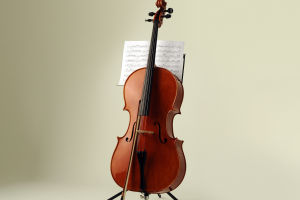The guitar, an iconic instrument in popular music, boasts a rich evolutionary history that has consistently kept pace with the times.
While the earliest guitars' appearance remains a mystery, ancient plucked instruments with handles existed in West Asia and North Africa over two or three thousand years BC.
Archaeologists have uncovered a relief depicting a modern guitar on a Hittite city gate, dating back approximately 3,300 years. The guitar’s unique inwardly curved body, unlike other plucked instruments of the time, contributed to its resonance. Although it resembles an apple core rather than today’s familiar rounded figure 8, it is one of the oldest known guitar prototypes, preserved only in stone reliefs.
In recent years, the guitar has gained popularity among aspiring musicians due to its lightweight nature, portability, and ease of learning. Its accessibility makes it an ideal choice for novices venturing into music, particularly for spontaneous performances.
Selecting the right guitar is essential for those starting their musical journey. Guitars are generally classified into three categories: classical, folk, and electric, each with distinct features and purposes.
The classical guitar, originally a six-string instrument, uses nylon strings and is ideal for polyphonic works, rooted in classical music traditions. The folk guitar, also known as the acoustic steel-string guitar, is a six-string instrument commonly used in pop, rock, blues, and folk music.
ESSENTIAL GUITAR THEORY
Video by Redlight Blue
In contrast, the electric guitar, a product of modern technology, generates sound through electromagnetism rather than the traditional resonance of the body. With a solid body made from modern hardwoods, it requires additional equipment such as volume and tone controls, along with a tremolo system for amplification.
The sound is produced by the electric current generated when the strings vibrate through a magnetic field, necessitating the use of speakers and pickups to properly amplify the sound.
Whether delving into classical compositions, folk tunes, or contemporary rock, the guitar—through its various types and rich history—remains a versatile and enduring musical instrument for enthusiasts of all skill levels.
Beyond its historical roots, the guitar has evolved into a universal symbol of musical expression, adapting to the changing preferences of both musicians and audiences over time.
From the classical melodies of the Renaissance to the electrifying riffs of modern rock, the guitar’s adaptability is unmatched. Its evolution goes beyond design, incorporating a wide range of playing styles and techniques that have shaped musical genres and defined generations.
The guitar’s appeal extends beyond its sonic capabilities; it has become a cultural icon and a medium through which emotions are expressed in melody. Its portability and accessibility have made it a preferred instrument for musicians worldwide, creating a global community of guitar enthusiasts and performers who continue to push the boundaries of musical creativity.
In contemporary music, the guitar is not just a standalone instrument but also a vital component of collaborative compositions. Whether in a symphony orchestra, a jazz ensemble, or a rock band, the guitar’s versatility allows it to seamlessly integrate into diverse musical landscapes, adding depth and texture to every genre.
The advent of technology has further propelled the guitar into the future, with innovations like digital effects and modeling amplifiers expanding its sonic possibilities. Guitarists can now experiment with a vast range of tones and textures, pushing the boundaries of traditional sound and continuously redefining the instrument’s role in modern music.


